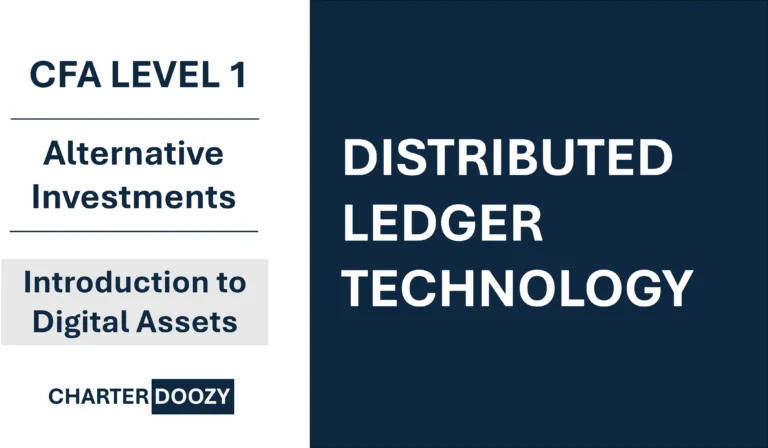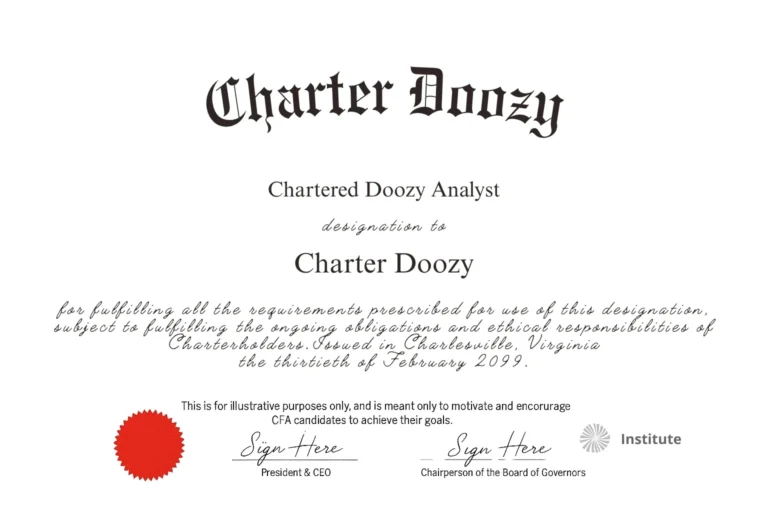Check our Reddit post on the differences between Proof of Work (PoW) and Proof of Stake (PoS)
Transcription
[00:00:00] Slide 2 – Big picture overview
All right. How’s it? Let’s begin now with the big picture. So, distributed ledger technology, otherwise known as DLT, is the foundation really for everything in the digital asset economy.
So from cryptocurrencies to tokenized securities, this is really the core. So instead of relying on a single central authority like a bank, perhaps an exchange, DLT uses a network of participants to record, share and validate transactions. So you can think of that really as a difference, let’s say between a bank or a centralized bank or even a stock market, and now a decentralized network of different, computers talking to one another. So this creates a system that is much more transparent, secure, and tamper resistant.
If you want to understand how blockchain defi and digital assets work. This really is the starting point.
[00:00:58] Slide 3 – What is a Distributed Ledger?
Okay, so to get a little bit deeper, a distributed ledger is simply, that’s a database that lives on multiple computers, also called nodes instead of a single server. So each node stores a complete copy of the entire ledger. But here’s the key. Changes in the ledger must be validated by the network using some sort of a consensus mechanism. And this is really important. The shared validation is what builds the trust. So without needing a middleman, this is really where decentralized platforms differ from centralized platforms. It’s what makes decentralized platforms actually possible, and that was really the breakthrough of the Defi movement.
[00:01:42] Slide 4 – Key features of DTL
Okay, so there are four core features of DLT that you must remember, and this is really the heart of it now. So firstly, DLT, decentralization, no single point of control. Responsibility is spread across all the nodes. Number two, immutability. Learn that term. It means that once something is created, it cannot be changed unless the entire network agrees.
Number three, transparency. Everyone sees the same data at the same time, and that’s obviously very, very powerful. And the fourth core feature of DLT is the consensus mechanism. That’s what we’ve just spoken about. And these are really the rules for how the network goes and agrees on new transactions. So those are the four core principles of DLT.
[00:02:36] Slide 5 – Blackchain as a type of DLT
Okay, so moving on to blockchain in particular. Blockchain is the top of distributed ledger, but instead of just storing rows of data, like you can imagine a traditional database, maybe a SQL database storing data in rows. Blockchain stores data in well blocks each link to the previous one using cryptographic hashes.
So that linkage is really important and that chaining, and ultimately that’s where the word blockchain comes from. So every block contains a set of transactions and it references the block before it. So this linking of blocks creates a temper resistant chain, and that’s really where the security comes from and the power of the blockchain, which is what gives blockchain, its security again, and its chronological structure.
[00:03:27] Slide 6 – Public vs Private Bloackchains
Okay, so like the pigs in Animal Farm, not all blockchains are created equal. Apologies if you didn’t get that reference. You can look up the book Animal Farm.
So you get public blockchains, you get private blockchains. Public blockchains, for example, Bitcoin, Ethereum, you would’ve heard of these. They are open to anybody.
So anyone can read the ledger. Anyone can submit transactions, and anyone can participate in the consensus mechanism, as we discussed before. Private blockchains by contrast, are permissioned, so only selected participants have access. These are used typically by businesses, maybe governments and institutions where full transparency is not always ideal.
So again, just to summarize, public equals decentralized and open. Private, controlled and restricted.
[00:04:22] Slide 7 – Nodes and their roles
Okay. We talked earlier about nodes. If you remember, nodes are the computers that join the network together, and nodes are really the lifeblood of a decentralized ledger. So they store the ledger, they validate transactions, and in many cases, they help to achieve consensus. So some nodes are called validators or miners, depending on the protocol.
Others are observers, so they don’t validate, but they can still read and interact with the network. Every network plays a role. Sorry. Every node plays a role in making the system decentralized and resilient.
[00:05:01] Slide 8 – Consensus mechanisms
Okay, moving on now to deep dive. A little bit around consensus mechanisms, which we’ve discussed earlier, and they are really how the distributed ledgers agree on what is true. So you can imagine without them, nodes might disagree and the whole system would potentially fall apart. So you get two types of consensus mechanisms, proof of work, POW, proof of stake, POS.
So proof of work. This is used for example by Bitcoin. It’s where the nodes solve computational puzzles to validate a transaction. So this is, for example, if you have friends who are Bitcoin miners. So they, they are putting their computers to work to mine or to do this computational exercises, to validate transactions.
And in reward for that, they potentially could earn bitcoins. In this example, in the system.
You also get proof of work. Proof of work is where validators are chosen, not based on computational puzzle solving, but based on the amount of cryptocurrency they hold and then lock up as a stake. So the takeaway consensus mechanisms, they let the network function without a trusted third party in place.
[00:06:19] Slide 9 -Advantages and Limitations of DLT
Okay, so DLT decentralized ledger technology has become very popular, but worth noting that there are a number of advantages as well as disadvantages with the technology. So on the advantages side, there are a couple of major advantages. The first would really be security. So decentralization makes it harder to hack or to corrupt the system.
A second advantage would be auditability, so you get full immutable transaction history. So remember what we said, history of every transaction on the blockchain exists for everybody to see, to see and cannot be changed, and that obviously allows for a full audit history of the network.
The third advantage efficiency, it reduces the need for intermediaries and reconciliations.
There are also a number of disadvantages. So the first is scalability. Scalability, getting the network to grow can be a challenge, especially for public blockchains where there’s just so much information. The second- energy usage in proof of work specifically the energy usage can be extremely high, and there are actually some studies that the amount of energy used, for example, in the, in the Bitcoin network is comparable to some small countries. So quite crazy when you put it in those terms. And the third disadvantage to bear in mind is the legal environment is still evolving. So many jurisdictions lack clear rules around DLT and its usage. These disadvantages hopefully will be ironed out over time and the advantages will come to the fore.
But the reality of things as they exist today is that there are a number of advantages as well as disadvantages, which make this such a dynamic and interesting, um, environment.
[00:08:08] Slide 10 – Types of digital assets
Okay. We’ve talked enough theory. Let’s step it back now and connect DLT to the real world applications. So digital assets, first up, are electronic records that represent rights. So similar to rights or assets in the real world, you could have, for example, ownership, access, or usage. It’s just a digital version of ownership. So they can function, for example, as currencies, as securities, or even as commodities.
These assets are made possible by the backbone of decentralized ledger technologies, and they come in two main groups, which we’re gonna talk about. The first is cryptocurrencies, and the second is tokens.
[00:08:54] Slide 11 – Types of digital assets (continued)
Okay, beginning with cryptocurrencies said simply cryptocurrencies are digital money. So examples include Bitcoin, alt coins, stable coins, meme coins, and even central bank digital currencies, also known as CBDCs. So they are typically decentralized. They’re not backed by government and have no physical form.
Contrasting cryptocurrencies now with tokens. Tokens on the other hand, represent rights, so different to digital money. These are really rights and they come in different forms. So for example, security tokens that would mirror a stock or a bond, for example. Utility tokens, these could be used to pay for services in a digital network.
Governance tokens allow users to vote on network changes. And NFTs, or non fungible tokens, they’re unique tokens tied to a digital item. So you can think about art, music, or even collectibles.
[00:09:57] Slide 12 – Key characteristics of digital assets
Okay, so let’s zoom in now a little bit, uh, a little bit deeper. Cryptocurrencies first. Cryptocurrencies are fully digital. Enable, enable peer-to-peer transfers and are often very volatile due to uncertain valuations.
Tokens, on the other hand, offer more diverse use cases. We’ve mentioned some of them, but let’s go a little bit deeper.
So first up, tokenization. It helps transfer real world assets efficiently. NFTs are non fungible, as we said, which means that each one is unique. Um, security tokens, these streamlined post-trade processing. ICOs, um, comparable to IPOs, but ICOs allow you to raise funds without the traditional IPO regulation. Utility tokens, these are used for payments within networks. And Governance Tokens give holders voting rights in decentralized protocols.
[00:10:58] Slide 13 – Key takeaways
Okay, we’ve said quite a lot. You will need to go back into your notes. You will need to commit some of this terminology to memory and start to get more of a feeling for what these things all mean and how they plug together. But we have covered the basics and here’s what we’ve covered. Distributed ledger technology, DLT removes the need for centralized record keeping.
Blockchain is the most widely used form of DLT consensus mechanisms. They enable trust, remember, without intermediaries. Digital assets come in many forms, and DLT is what makes them possible.
So DLT really this backbone that enables a full ecosystem of digital financial services and products. And then just to remember, DLT, it comes with limitations, scalability, energy use and regulation, as well as a host of advantages, which we’ve talked about, which, are making this more and more of an attractive space to be in.
[00:11:55] Slide 14 – Practice Question 1
Okay. Let’s look at a couple of pretty simple questions just to test your recall. First up, which of the following is a key feature of distributed ledger? Feel free to pause any of these if you need an extra minute or two just to, um, give it a bit more thought.
[00:12:15] Slide 15 – Answer 1
And the correct answer of course is c immutability. Once recorded data on the DLT cannot be changed without network agreement.
[00:12:25] Slide 16 – Practice Question 2
Next one, which best describes a public blockchain.
[00:12:32] Slide 17 – Answer 2
Okay, so the correct answer again is C. It is permissionless and open to anyone, so public blockchains are open networks. Anyone can participate.
[00:12:46] Slide 18 – Practice Question 3
Next question, what is the main function of a consensus mechanism?
[00:12:54] Slide 19 – Answer 3
Okay. The correct answer here is D. Ensure agreement of data among network participants. This is what keeps distributed ledgers consistent and secure. I.
[00:13:08] Slide 20 – Practice Question 4
Okay. Final question. Which of the following is true about private blockchains?
[00:13:17] Slide 21 – Answer 4
Again, the correct answer. D. They are permissioned and controlled. So unlike public blockchains, um, private blockchains, access is restricted and governed by an entity.
[00:13:31] Slide 22 – Wrap up
Okay, let’s wrap up this section. Now you should have a good understanding of number one, what distributed ledger technology, DLT, is and is all about. How blockchain fits into that picture. The differences between public and private networks. The importance of nodes and consensus mechanisms. And the full landscape of digital assets.
So obviously at a very high level, but you’re starting to understand how these pieces are laid out, what they mean, what they do, and that’s really going to open up the terrain for us to start moving into a bit more of the detail now.
I’ll see you in the next video.

Why Trust Is Being Rewritten—One Block at a Time
There’s something thrilling about watching trust unravel. Not the destructive kind—the constructive kind. The kind that strips away legacy assumptions and rewires the world in code. And nowhere is that more visible than in the slow, quiet takeover of distributed ledger technology (DLT).
If you’re reading this, you’re probably the sort of person who thinks in probabilities, risk premiums, and asset classes. Maybe you’ve glanced at crypto and dismissed it as a speculative sideshow. But DLT isn’t about meme coins. It’s about rebuilding the plumbing of finance—and, in the process, redefining what it means to trust.
This is what the smartest minds in finance are starting to realize: DLT isn’t a product, it’s a paradigm.
Ledgers Were Never Sexy. Until Now.
Let’s start with the basics.
For centuries, ledgers were boring. They were books. Then spreadsheets. Then databases. All of them operated on a simple assumption: someone owns the record, and everyone else relies on that entity to be accurate and honest.
Banks, exchanges, brokers, clearinghouses—they all exist, fundamentally, to maintain and reconcile ledgers.
Enter distributed ledger technology. Suddenly, the ledger becomes shared, tamper-resistant, and self-verifying. Everyone can see it. No one can unilaterally alter it. And trust emerges not from reputation or regulation, but from cryptographic consensus.
That’s a radical shift.
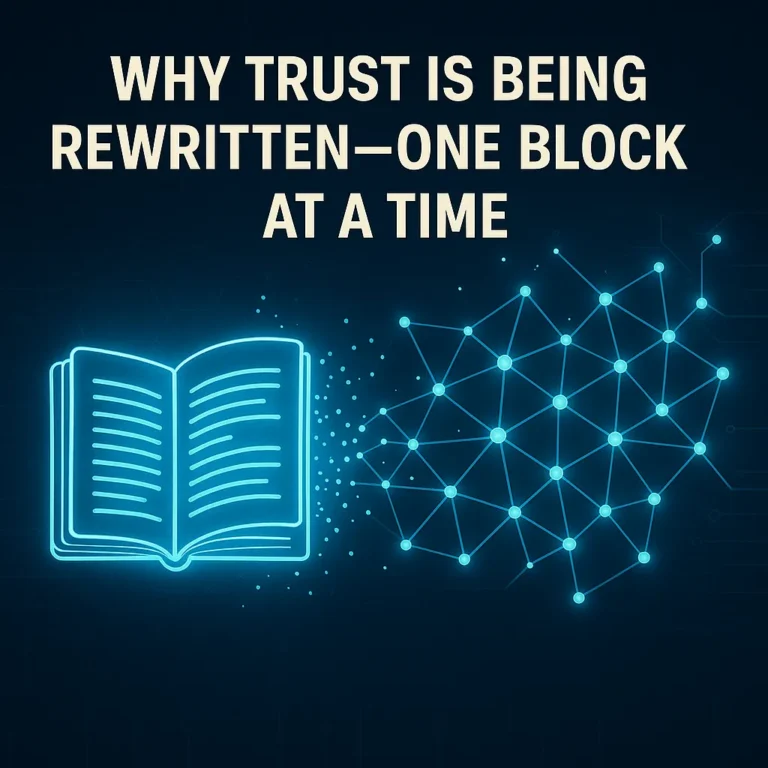
Centralized vs Distributed: It’s Not Just Architecture
A centralized ledger is easy to understand. It’s fast, efficient, and controlled.
But control is a double-edged sword. It introduces:
Single points of failure
Asymmetric access to data
A need for reconciliation across silos
DLTs turn this model inside out. They distribute the ledger across nodes on a network. Every node holds a copy. Every transaction must be validated through a consensus mechanism. No single node can act unilaterally.
That makes DLTs:
Resilient (no central point of attack or failure)
Transparent (transactions visible to all participants)
Immutable (once confirmed, records can’t be changed without consensus)
In short: DLTs decentralize trust.
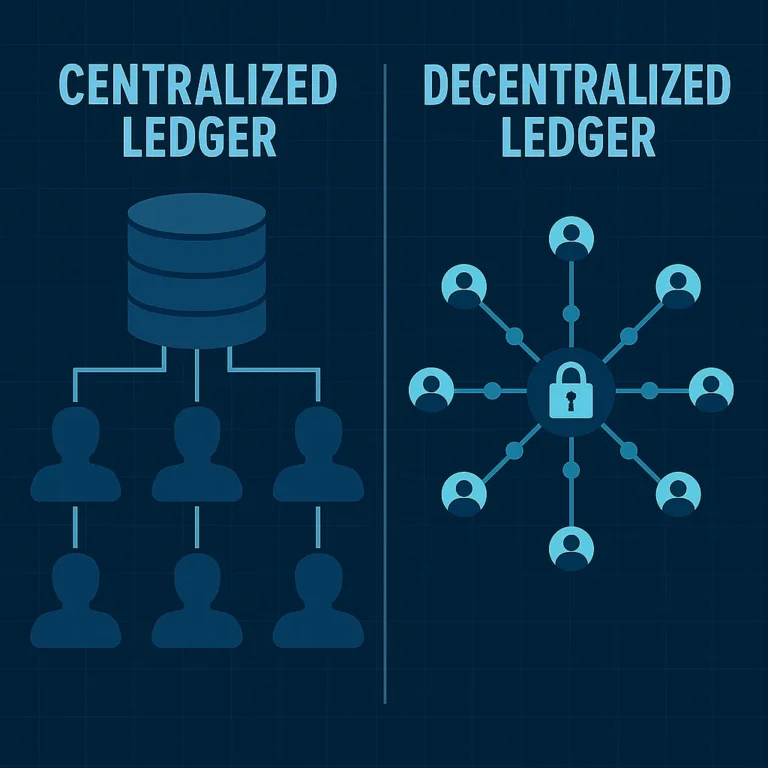
Not All DLTs Are Created Equal
Let’s clear something up: not all DLTs are public, open, or permissionless. That’s a common misconception.
Two Primary Flavors
Permissionless DLTs (e.g., Bitcoin, Ethereum):
Open to anyone
Decentralized governance
Secured by economic incentives (like mining or staking)
Permissioned DLTs (e.g., Hyperledger Fabric, R3 Corda):
Participation is restricted to approved entities
Used in enterprise settings (banks, trade finance, supply chains)
Governance and consensus mechanisms are defined by the consortium
This is important because real-world financial applications often require identity, privacy, and compliance. Permissioned DLTs bridge that gap.
Consensus: The Most Important Boring Concept
How do you keep a distributed system honest? That’s the job of a consensus protocol.
In traditional finance, consensus is achieved by trusting institutions, auditors, or regulators. In DLT, it’s achieved through cryptographic proof and network-wide agreement.
Dominant Models
Proof of Work (PoW): Security through computational effort. Expensive but battle-tested. Used by Bitcoin.
Proof of Stake (PoS): Security through economic commitment. Energy-efficient. Used by Ethereum (post-Merge).
Others include delegated PoS, proof of authority, and hybrid models. Each one reflects trade-offs between security, decentralization, and efficiency.
The takeaway? Consensus isn’t just technical. It’s the heart of trust in a DLT system.

Smart Contracts: Logic Without Lawyers
Imagine if money could move only when specific conditions were met—automatically. That’s what smart contracts enable.
They are self-executing code snippets stored on a blockchain that perform actions when triggered:
Transfer funds
Unlock access
Validate identity
This makes smart contracts ideal for:
Derivatives settlement
Trade finance automation
Digital identity and KYC workflows
But smart contracts also introduce new risks: bugs, exploits, and unintended consequences. They require rigorous auditing, much like any critical financial system.
Financial Applications: More Than Just Talk
This is where theory becomes practice.
Financial institutions are exploring DLTs for:
Post-trade clearing and settlement (T+0 instead of T+2)
Tokenization of assets (real estate, equities, bonds)
Digital identity and KYC management
Cross-border payments
Compliance and regulatory reporting
The potential isn’t in disrupting finance overnight. It’s in erasing inefficiencies that cost billions annually.
When a single source of truth exists across parties, you eliminate duplication, errors, and delays. That’s not radical. That’s rational.
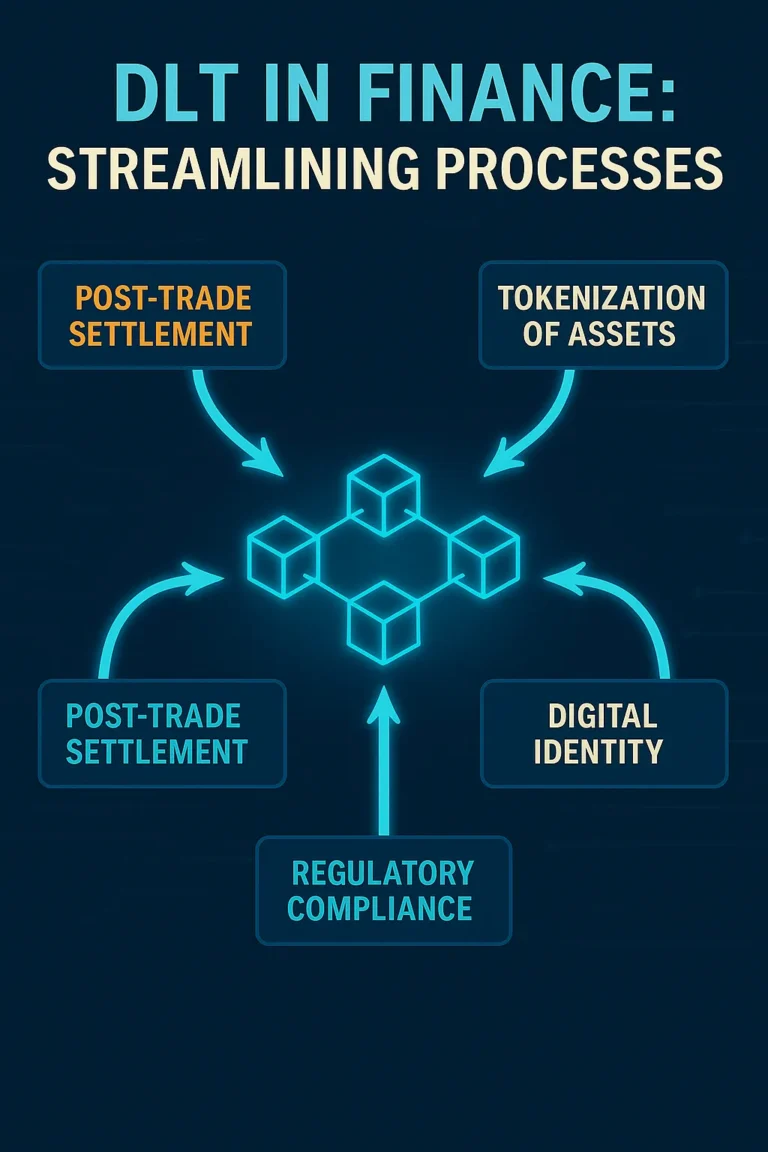
DLT vs Blockchain: Are They the Same?
Not quite.
All blockchains are DLTs, but not all DLTs are blockchains.
Blockchain: Data is stored in sequential blocks. Public or private. E.g., Bitcoin.
DLT: Broader concept. Data may be stored in graphs, directed acyclic graphs (DAGs), or other structures. E.g., IOTA.
Think of blockchain as a specific implementation of DLT.
Why does this distinction matter? Because some enterprise solutions may use non-blockchain DLTs to optimize for scalability, latency, or access control.
The Governance Question: Who Controls the Controller?
In traditional finance, governance is formal: regulators, boards, and contracts.
In DLT systems, it gets murky.
Who maintains the protocol?
Who decides on upgrades?
Who bears responsibility for failures?
Governance tokens attempt to answer this. They give holders the right to vote on protocol changes. But like democracy, decentralized governance is messy, slow, and hard to scale.
Some systems blend centralized coordination with decentralized validation. Others delegate governance to foundations or core developer teams. There’s no one-size-fits-all.
But here’s the big idea: DLT forces us to rethink power and accountability at the protocol level.
Scaling, Speed, and the Real-World Tradeoffs
Here’s a hard truth: many DLTs are slow and expensive.
Visa processes 24,000 transactions per second. Ethereum’s base layer handles 15.
That’s why we see:
Layer 2 solutions (e.g., rollups, state channels)
Sidechains and app chains
Optimized consensus models
Trade-offs are unavoidable. You can have decentralization, security, or scalability – pick two. But the space is evolving rapidly.
Don’t bet against engineers. Especially when there’s billions of dollars at stake.
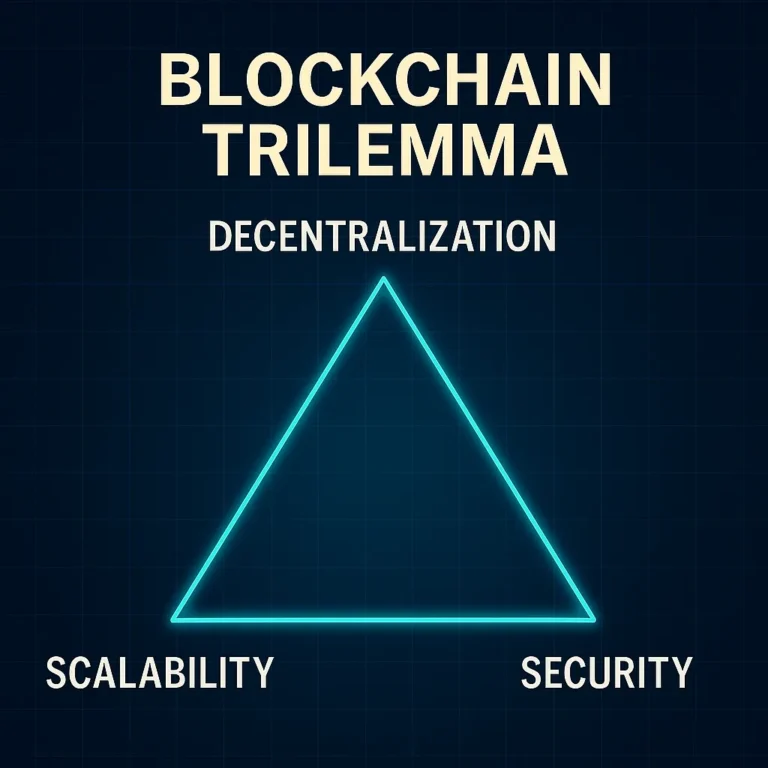
Final Thoughts: The Real Disruption is Quiet
It won’t be NFTs or price pumps that define this era.
It will be the silent replacement of outdated infrastructure with something more open, resilient, and efficient.
DLT is rebuilding trust—not by asking for it, but by removing the need for it.
And in a world where trust is in short supply, that might be the most valuable asset of all.
